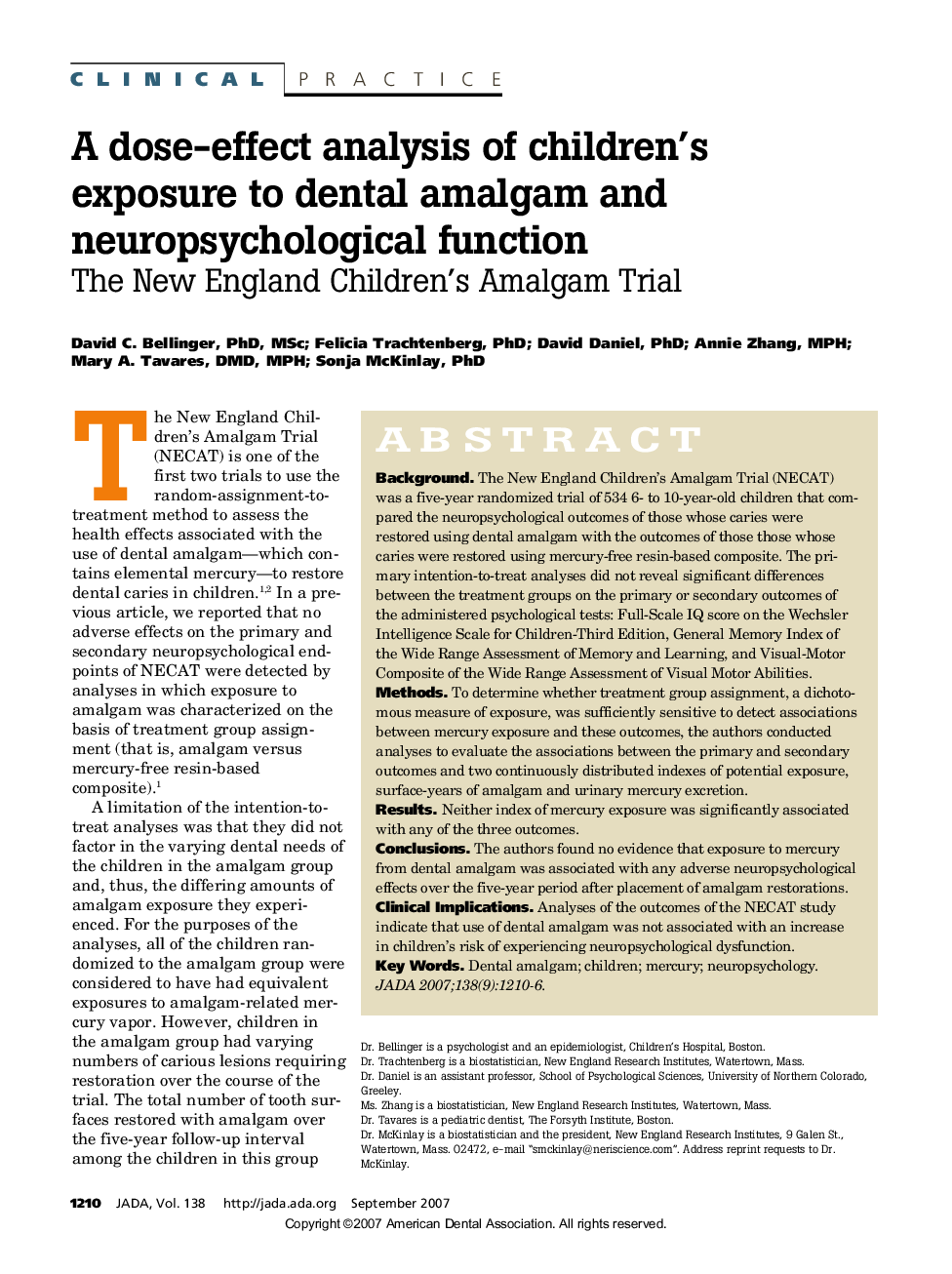| Article ID | Journal | Published Year | Pages | File Type |
|---|---|---|---|---|
| 3140429 | The Journal of the American Dental Association | 2007 | 7 Pages |
ABSTRACTBackgroundThe New England Children's Amalgam Trial (NECAT) was a five-year randomized trial of 534 6- to 10-year-old children that compared the neuropsychological outcomes of those whose caries were restored using dental amalgam with the outcomes of those those whose caries were restored using mercury-free resin-based composite. The primary intention-to-treat analyses did not reveal significant differences between the treatment groups on the primary or secondary outcomes of the administered psychological tests: Full-Scale IQ score on the Wechsler Intelligence Scale for Children-Third Edition, General Memory Index of the Wide Range Assessment of Memory and Learning, and Visual-Motor Composite of the Wide Range Assessment of Visual Motor Abilities.MethodsTo determine whether treatment group assignment, a dichotomous measure of exposure, was sufficiently sensitive to detect associations between mercury exposure and these outcomes, the authors conducted analyses to evaluate the associations between the primary and secondary outcomes and two continuously distributed indexes of potential exposure, surface-years of amalgam and urinary mercury excretion.ResultsNeither index of mercury exposure was significantly associated with any of the three outcomes.ConclusionsThe authors found no evidence that exposure to mercury from dental amalgam was associated with any adverse neuropsychological effects over the five-year period after placement of amalgam restorations.Clinical ImplicationsAnalyses of the outcomes of the NECAT study indicate that use of dental amalgam was not associated with an increase in children's risk of experiencing neuropsychological dysfunction.
